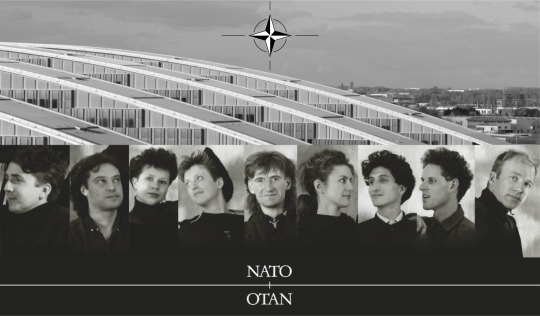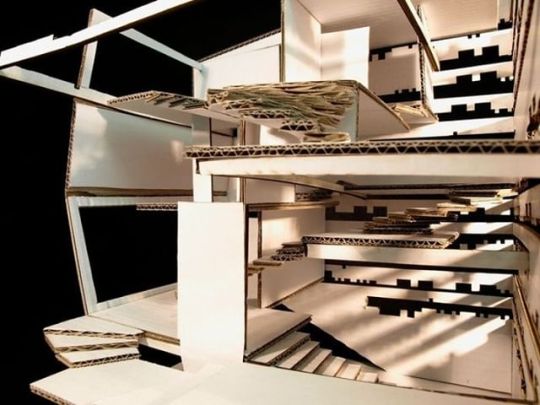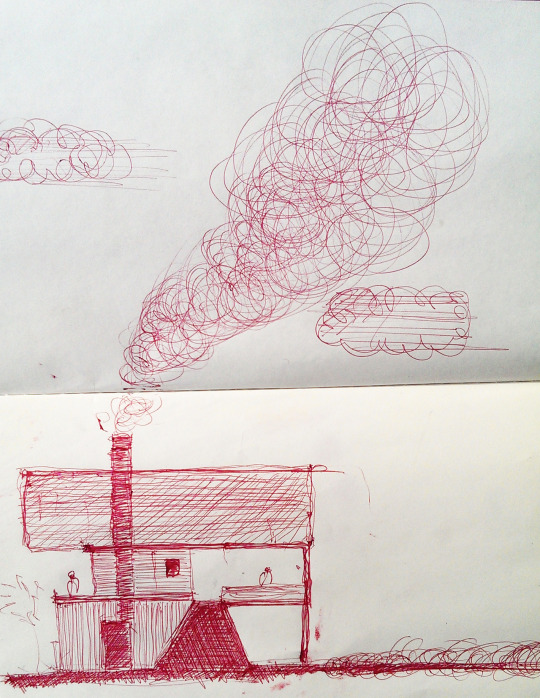#NarrativeArchitecture
Text

Architectural Narratives: From NATØ's Radical Visions to OMA's Provocative Practice and Beyond
The Architectural Association (AA) in London has been a pivotal institution in shaping contemporary architectural thought and practice. Its influence extends through a diverse array of architects and architectural movements, including the radical narrative-driven approach of NATØ under Nigel Coates, as well as the work of Rem Koolhaas and his Office for Metropolitan Architecture (OMA) and the research-oriented AMO. This narrative draws on the pedagogical lineage of the AA, emphasizing the transformative role of the architect, akin to a draughtsman's contract, in shaping and challenging socio-political landscapes through design.
NATØ, or Narrative Architecture Today, emerged from the Architectural Association in the early 1980s. Under the guidance of Nigel Coates, the group developed an architectural approach that integrated elements of fashion, television, music, video, and nightlife. This was a deliberate departure from the more traditional and introspective work prevalent at the AA. Their narrative architecture aimed to break down professional barriers and engage directly with urban subcultures, reflecting the chaotic and vibrant milieu of 1980s London. They sought to create a participatory urbanism where the city's inhabitants played a central role in shaping their environment, moving away from top-down professional imposition.
The AA has been a crucible for avant-garde architectural education, fostering an environment that encourages experimentation and narrative-driven approaches. Nigel Coates, alongside other influential figures like Bernard Tschumi, cultivated a pedagogical ethos that challenged conventional architectural norms. This environment not only birthed NATØ but also influenced other significant architects, including Rem Koolhaas.
Rem Koolhaas, a prominent figure in contemporary architecture, studied at the AA during the 1970s. His experience at the AA was formative, shaping his architectural philosophy and approach. Koolhaas's Office for Metropolitan Architecture (OMA) has become renowned for its innovative and often provocative designs that challenge traditional architectural boundaries. OMA’s work spans various scales and typologies, from urban planning to iconic buildings, always pushing the envelope of architectural discourse.
In addition to OMA, Koolhaas established AMO, a research-oriented counterpart to OMA. AMO engages in interdisciplinary research and consultancy, addressing broader cultural, social, and political issues. This dual approach—practical architecture through OMA and theoretical exploration through AMO—reflects a comprehensive engagement with architecture’s potential to influence and respond to contemporary challenges.
The notion of the architect as akin to a draughtsman's contract can be understood as a metaphor for the architect's role in mediating between ideas and their material realization. This concept is particularly resonant in the work of both NATØ and OMA/AMO. In Peter Greenaway’s film "The Draughtsman’s Contract," the draughtsman’s meticulous drawings are not just representations but instruments of power and transformation. Similarly, architects, through their designs, wield the power to shape and transform spaces, cultures, and political landscapes.
NATØ’s narrative-driven architecture and OMA/AMO’s provocative and research-oriented projects both exemplify how architecture can serve as a powerful medium for socio-political commentary and change. NATØ's work rejected the traditional boundaries of the profession, promoting an inclusive and participatory urbanism. Their narrative approach infused architecture with symbols and metaphors from everyday life, making it more accessible and engaging.
OMA’s projects, under Koolhaas's direction, often critique and reinterpret urban and architectural conventions. The CCTV Headquarters in Beijing, for example, challenges conventional skyscraper design, while projects like the Seattle Central Library reimagine the role of public space in the digital age. AMO’s research projects further extend this critique, exploring issues such as globalization, media, and politics, and their impact on architecture and urbanism.
The NATO headquarters in Brussels, designed by Skidmore, Owings & Merrill (SOM), represents a symbolic shift from military opposition to unity and integration. This design, with its interlaced office wings, embodies the narrative of peace and collaboration. The building’s sustainable and flexible design reflects contemporary values and underscores architecture’s role in promoting political and social ideals.
Reflecting on NATO and its architectural counterpart NATØ, an interesting parallel can be drawn. If NATO stands for Narrative Architecture Today, then OTAN, being the reverse acronym, could creatively stand for "Observations on Transformative Architectural Narratives." This maintains the architectural theme while providing a thoughtful and fitting reversal that emphasizes the reflective and analytical aspects of architectural narratives.
The Architectural Association in London has been instrumental in fostering a lineage of architects who challenge and expand the boundaries of architectural practice. Through the radical narrative architecture of NATØ and the innovative, research-driven work of Rem Koolhaas's OMA and AMO, the AA’s influence is evident. These architects embody the role of the draughtsman, not merely as designers but as agents of cultural and political transformation. Their work illustrates how architecture can transcend traditional boundaries, engaging with and shaping the socio-political landscapes of their time. This legacy continues to evolve, influencing contemporary architectural discourse and practice, and ensuring that architecture remains a dynamic and transformative field.
#ArchitecturalNarratives#NATØ#NigelCoates#RemKoolhaas#OMA#AMO#ArchitecturalAssociation#NarrativeArchitecture#UrbanDesign#Postmodernism#ContemporaryArchitecture#ArchitectureAndPolitics#DesignInnovation#ArchitectsAsStorytellers
2 notes
·
View notes
Text
Narrative is not an option selected from a pattern book or looked up on the Internet. It relies on your ability to draw on the world around you, and render it light enough to move into the territory of the imagination [...].
p. 43
0 notes
Photo

Perhaps you need #architecture to really "see" #literature... Last chance to see the translation of narrative and literary elements to architectural models in #NarrativeArchitecture, #Design a Fiction at #HausderArchitekturGraz⠀ ⠀ 'Narrative Architecture, Design: A Fiction' at Haus der Architektur Graz in Graz, Austria: January 19, 2019 - February 2, 2019⠀ ⠀ https://hda-graz.at/programm/narrative-architecture-design-a-fiction⠀ ⠀ #exhibition #Kafka #Hemingway #Borges #HDA #Graz — view on Instagram http://bit.ly/2G4bn7I
0 notes
Photo

1 note
·
View note
Text
The city constitutes a rich theatre of memory that melds all the senses in ways that suit every single one of us, in our capacity to combine instinct and knowledge, rational understanding and the imagination.
p. 14
0 notes
